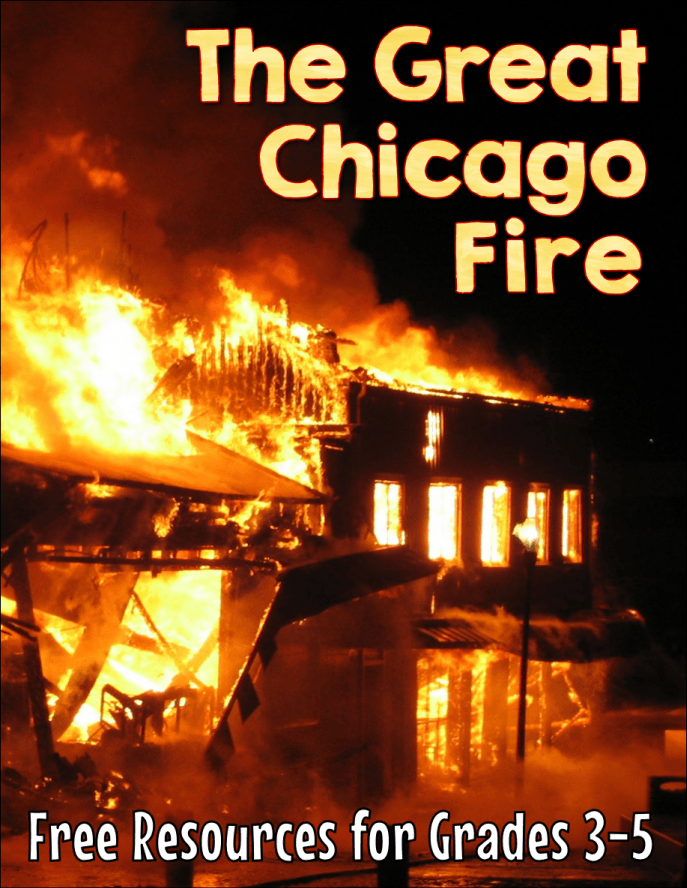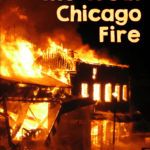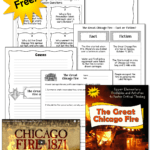The Great Chicago Fire: Free Upper Elementary Resources
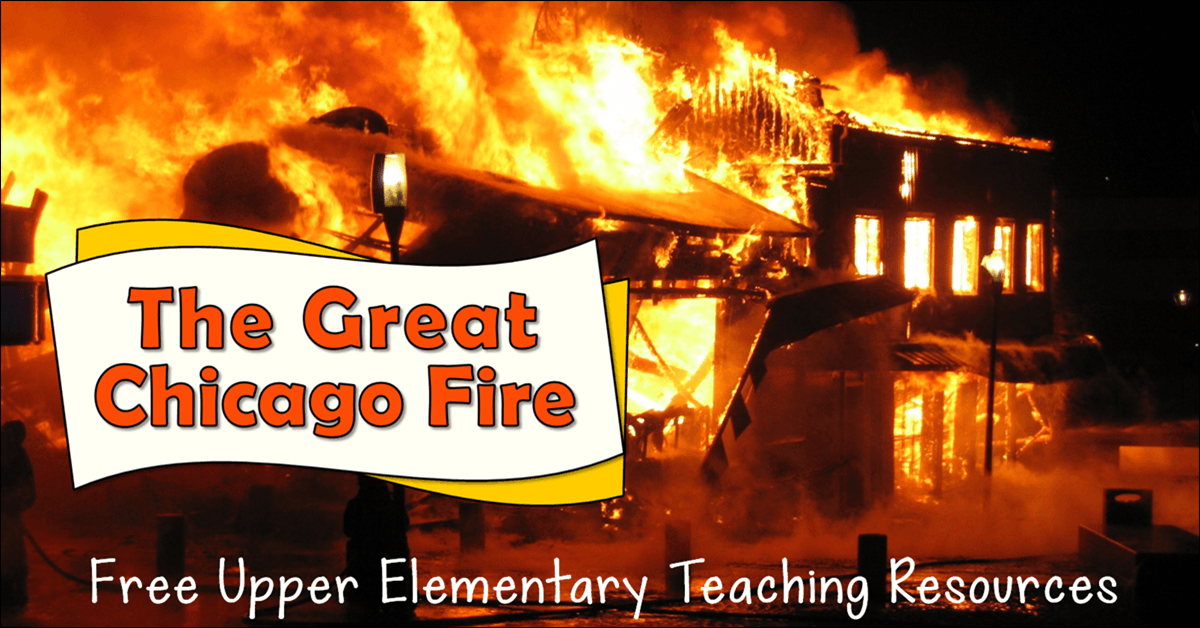
Do you remember singing the silly campfire song about old Mother Leary who left a lantern in her shed? It goes like this:
Old Mother Leary left a lantern in the shed,
And when the cow kicked it over,
she winked her eye and said,
‘There’ll be a HOT time
on the old town tonight.’
FIRE, FIRE, FIRE!”
I remember singing this every summer in Girl Scout camp, and I never had a clue that it was anything more than a silly song! But last week when I was watching a video about the Great Chicago Fire of 1871, I learned that this song was based on a local legend about how that fire started, and the story wasn’t even true! Although the fire did start on the O’Leary property, there’s no evidence that it was caused by a cow kicking over a lantern. In fact, the newspaperman who first wrote that story admitted that he made up the detail about the cow kicking over the lantern! Sadly, Mrs. O’Leary never got over the shame of having the great fire blamed on her family. I’m not sure I’ll ever be able to sing that song with enthusiasm again!
The Great Chicago Fire Video
I shared that story because the legend about Mrs. O’Leary is just one of the fascinating facts I learned while watching the video, Lessons from History: The Great Chicago Fire. I found the video on Sparky School House, a free site for educators hosted by the National Fire Protection Association (NFPA) that’s chock full of resources for teaching kids about fire safety.
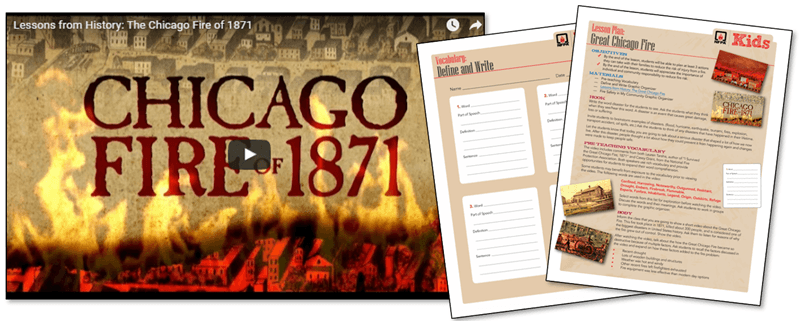
The video is perfect for upper elementary students because it’s only 7 minutes long and features an interview between Lauren Tarshis, the author of I Survived the Great Chicago Fire, and Casey Grant from the NFPA.
Another bonus is that Sparky School House has a free Common Core aligned lesson plan to go along with the video. Teaching kids about the Great Chicago Fire is a terrific way to integrate fire safety and prevention into the social studies curriculum, too! The video is on the main page of Sparky School House, and the lesson plan is in the Digital Backpack section.
Historical Fiction and Informational Texts
I was so intrigued by the information that Lauren and Casey shared about the fire that I immediately bought a copy of Lauren’s book, I Survived the Great Chicago Fire. It’s a terrific historical fiction novel for kids, and I really enjoyed reading it. I Survived the Great Chicago Fire is exciting, suspenseful, and full of details about the Chicago Fire. It would make a great read-aloud during Fire Prevention Month, and it would also be a terrific selection for literature circles. After I finished reading the book, I decided to look for an informational text to go along with this fiction selection. I was thrilled to find a Newbery Award title, The Great Fire, by Jim Murphy which will work well as a way for kids to verify the facts in the novel.
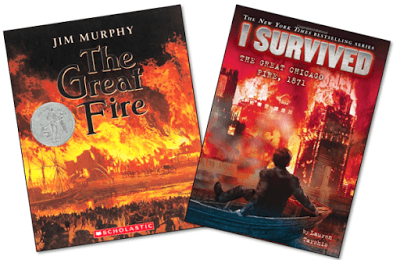
Great Chicago Fire Freebies
I LOVE creating free teaching resources to supplement children’s books and videos! Watching Lessons from History: The Great Chicago Fire and reading both books was just the inspiration I needed to create discussion cards, printables, and graphic organizers to make this topic easy to teach. Click here to download this freebie if you’d like to use this activity with your students. You can find the directions that go with the printables below.
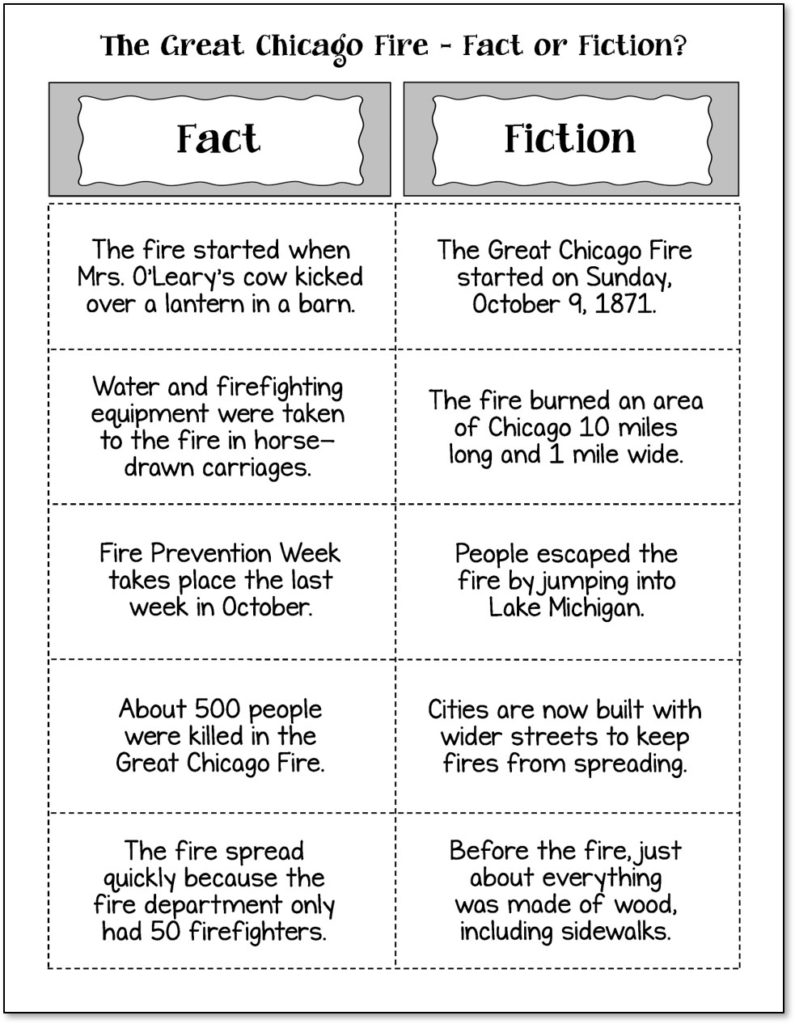
The Great Chicago Fire: Fact or Fiction can be used as a “hook” to create interest in the topic. It has two title cards and 10 statements about the Great Chicago Fire. Five statements are true and five are false, but they are not in any particular order on the printable. Before you show the Lessons from History: Great Chicago Fire video, give each team one copy of the printable and have them cut apart the cards. They should clear space in the middle of the team and place the Fact and Fiction title cards at the top of the work area. Next, ask them to take turns sorting the statements. In turn, each person reads one card aloud and the team discusses whether they think it’s true (fact) or false (fiction) and the card is placed under the appropriate title card. After you show the video, you can check the answers as a class to see how many statements each team was able to place correctly.
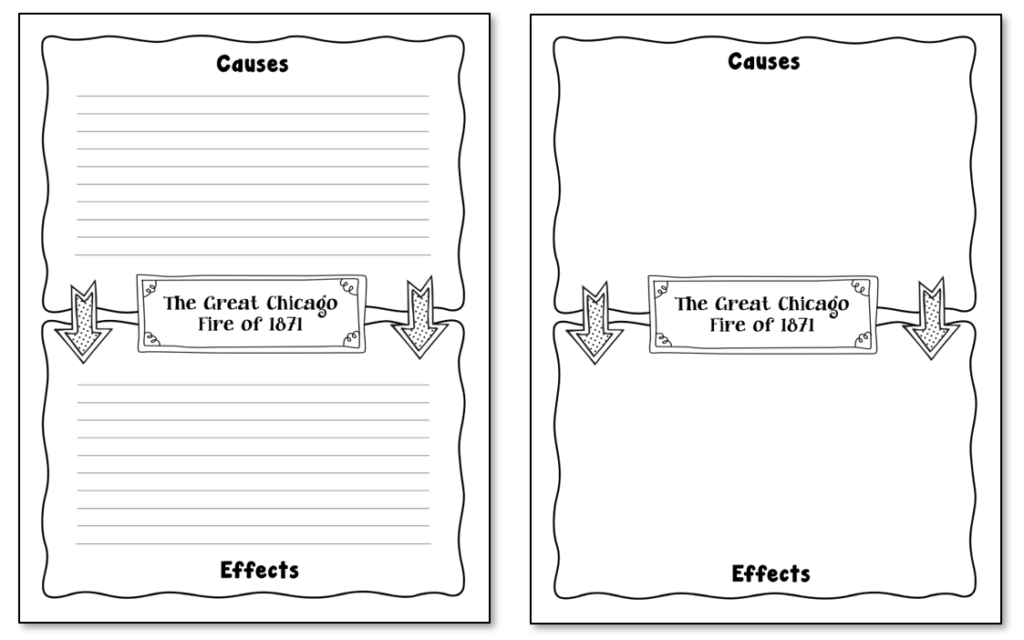
The Cause and Effect Graphic Organizer is perfect for digging deeper into why the Great Chicago Fire spread so quickly and was so devastating, as well as the short- and long-term effects of the fire. You can introduce the graphic organizer after students watch the video, and they can continue to add details after reading additional books or information on this topic. I created a version with lines as well as an open, unlined graphic organizer. Through the process of completing this graphic organizer, your students will realize that in addition to the obvious negative effects of the fire, there were some positive outcomes as well. For example, we now built cities differently and many fire safety laws have been passed.
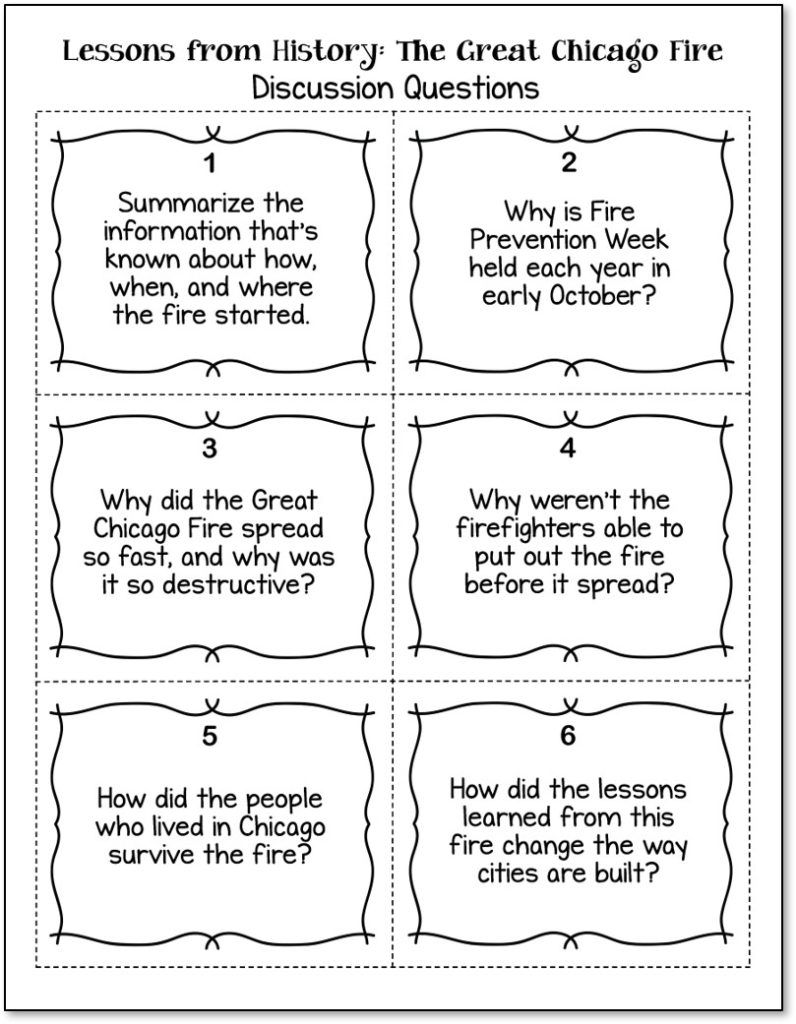
The Great Chicago Fire Discussion Questions include 6 task cards that can be used in a whole group setting, in small guided discussion groups, or in cooperative learning teams. They would work well with the Talking Sticks Discussion Strategy or with the strategies I shared in the post, Teaching Kids How to Have REAL Discussions.
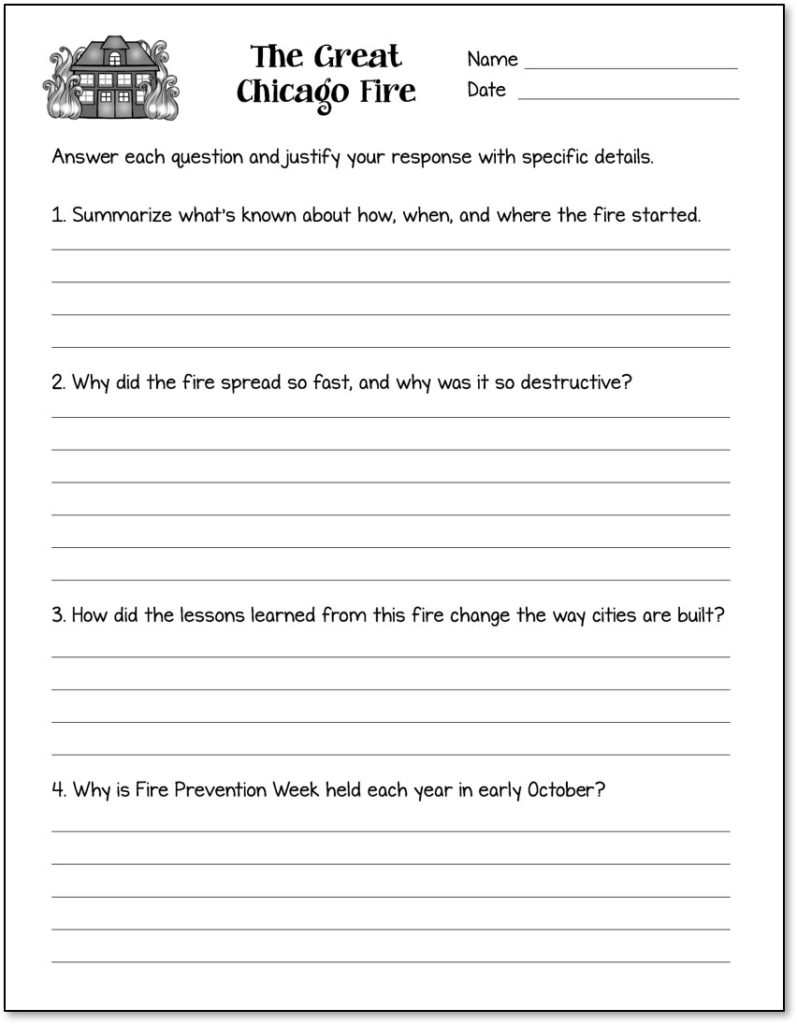
The final printable, The Great Chicago Fire Questions, consists of four questions from the Great Chicago Fire task cards with lines for writing complete answers. If you’re familiar with the Recharge and Write strategy that I explained in detail in my How to Teach Poetry webinar, you’ll recognize the format of this printable. If you don’t know the Recharge and Write strategy, you can use this printable as a written assessment after the other activities have been completed.
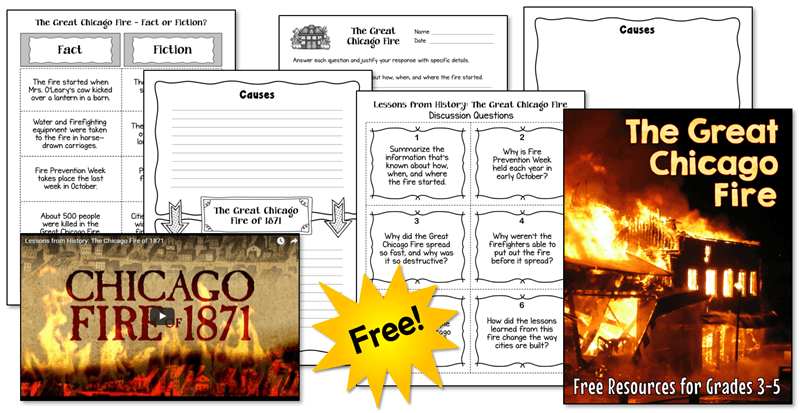
All of these printables are included in The Great Chicago Fire: Free Upper Elementary Resources. I hope you find these resources to be helpful during Fire Prevention Week, but you can use them any time of the year!
